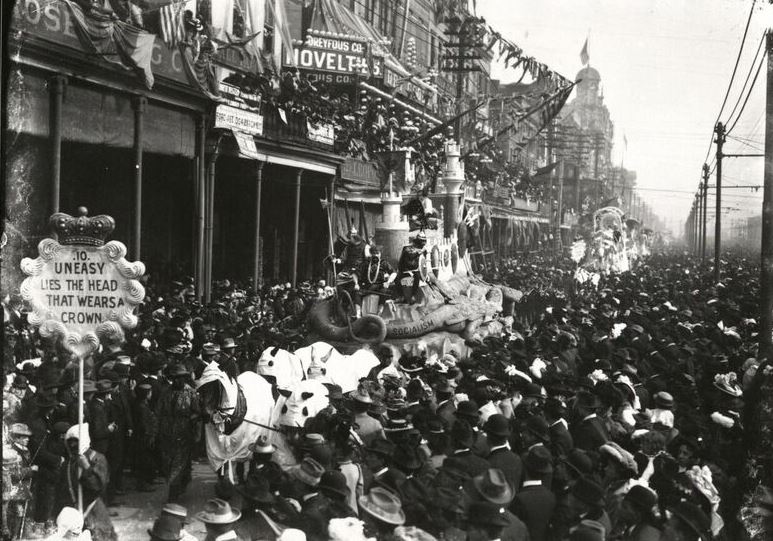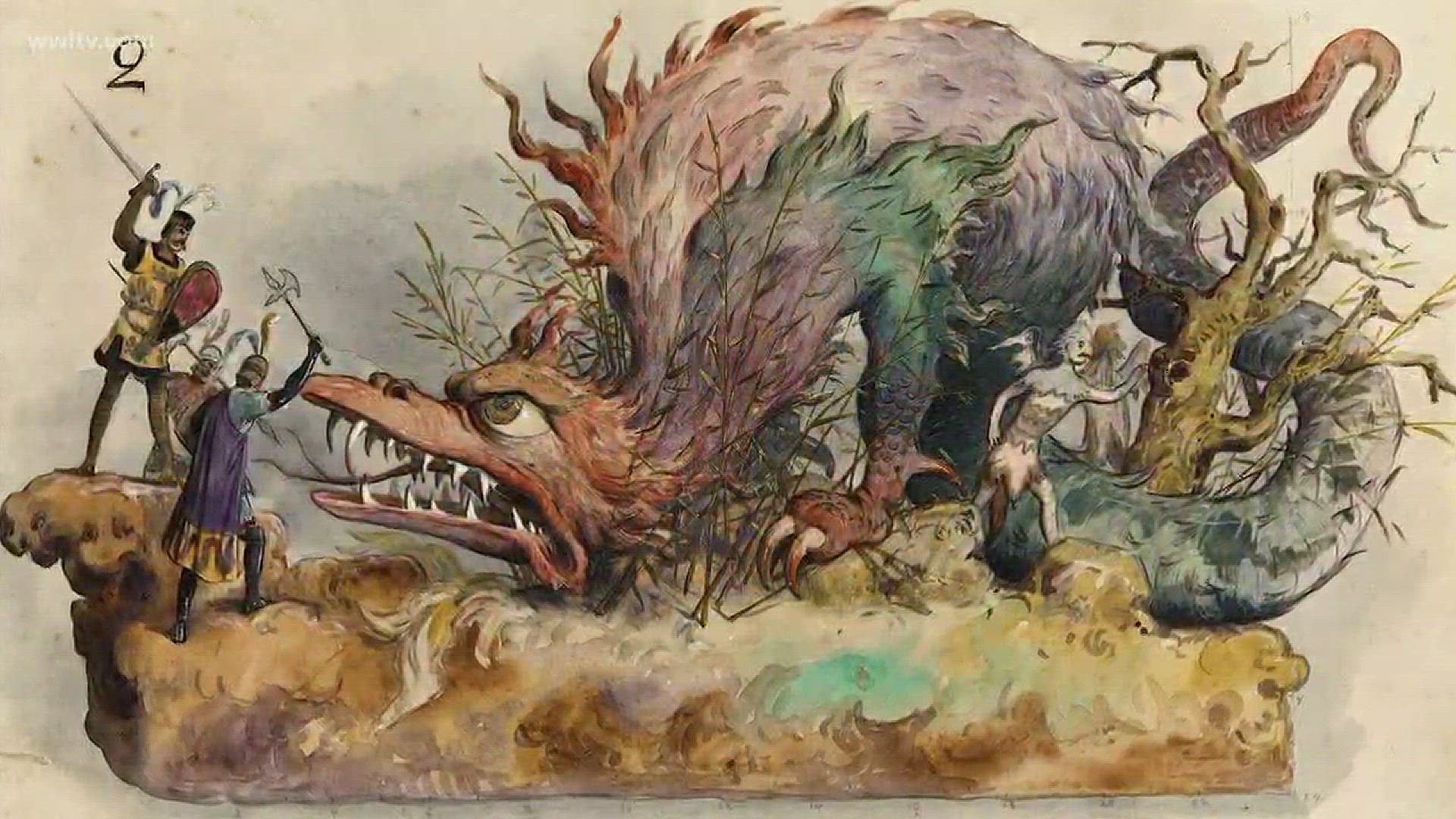The golden age of Carnival is preserved in photographs and some rare films, but not nearly enough to fully appreciate the artistry of Mardi Gras during that time. Fortunately, float sketches and parade bulletins give us a glimpse of what the Carnival crowds saw on the streets more than a century ago.
To Carnival historian Henri Schindler, there were few people as talented at producing a parade during the golden age as Bror Anders Wikstrom. “He definitely was the dean of Carnival designers,” said Schindler, who is the artistic designer for Rex, Hermes and several other krewes.
Wikstrom was born in Sweden in 1854. With artistic training in Stockholm and Paris, he came to New Orleans in 1883 and two years later, he began designing the Rex parade. But the job involved more than just floats. “When I started studying these people and their work, I just thought of them as float designers but the more I got into it, the more I realized they were production designers,” Schindler said. “They designed the floats, the costumes, what they called then the properties - fans, harps, swords, whatever the character carried. Because in those days nothing was being thrown from the floats, it was sheer spectacle.”
Wikstrom is the focus of an exhibit at the New Orleans Museum of Art, on view through April 1. The artist has been a name at NOMA for years, but not because of Carnival. A large wooden cabinet he designed was donated to the museum in 1914 by the Westfeldt family. It inspired the exhibit’s curator to explore more of his history.
“It’s a confection of swirling mermaids and plant life and I became very curious to know more about the artist behind it,” said Mel Buchanan, the museum’s RosaMary Curator of Decorative Arts and Design. “I scratched a little deeper and though I never had heard of him, his name is actually on this building at NOMA, carved into the architectural frieze.”
Although Wikstrom is now best known for his 25 years of parade designs, he was also a leading figure on the art scene in the 19th century as an illustrator, set designer, portrait painter and cartoonist.

“He was a great organizer of the arts community. He was of the founders in 1885 of the New Orleans Artists Association, one of the groups that advocated artists, brought them together, organized them, sought to bring in outside art, maybe to inspire artists,” Buchanan said. “It was one of the groups that maybe in an indirect or direct way led to this museum.”
Wikstrom’s Carnival history includes designing Rex parades from 1885 until 1905, and Proteus from 1900 until his death in 1909. “The sheer output alone would be remarkable. But what sets Wikstrom apart is his devotion almost to whimsy and to fantasy,” said Schindler.
Among the highlights of the NOMA exhibit is a full set of Wikstrom’s designs for the 1904 Proteus parade, titled “The Alphabet.” Even rarer is a bound volume of his sketches for the 1910 Rex parade, titled “The Freaks of Fable.” “A young man named Phil Biondillo salvaged these from literally a trash heap on St. Charles Avenue in the 1980s. His mother was emptying the contents of a mansion they had just purchased and fortunately he salvaged them,” Schindler said.

The sketches, along with other examples of Wikstrom’s work, are preserved at Tulane University. They’re invaluable tools for researchers, but more than that, they show that – when it comes to Carnival – the more things change, the more they - thankfully - stay the same. “To me, in Wikstrom’s designs you start to see the sense of whimsy and joy and fantasy,” said Buchanan. “And I see that continuing today when you go onto the streets, you see people in their pink wigs and butterfly wings and you don’t always have to be something, you be whatever you want to be with the real sense of joy and whimsy that makes Mardi Gras special.”

